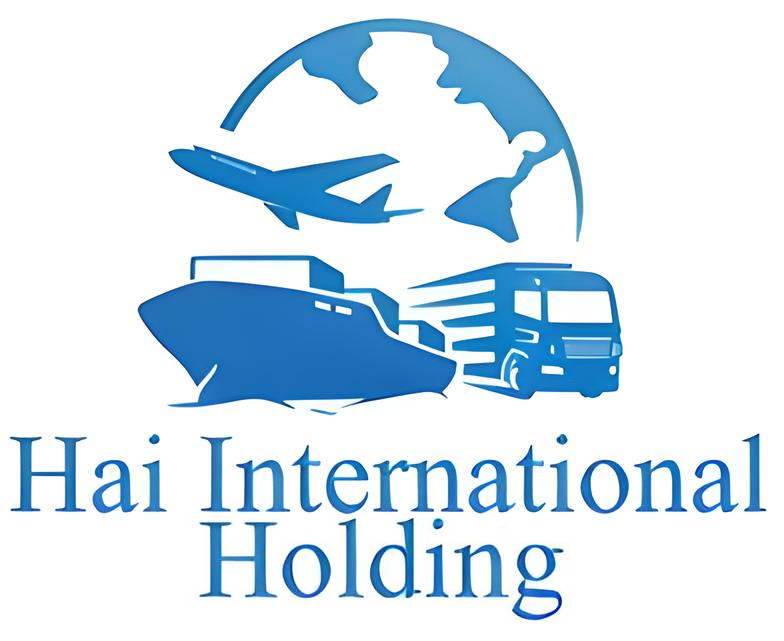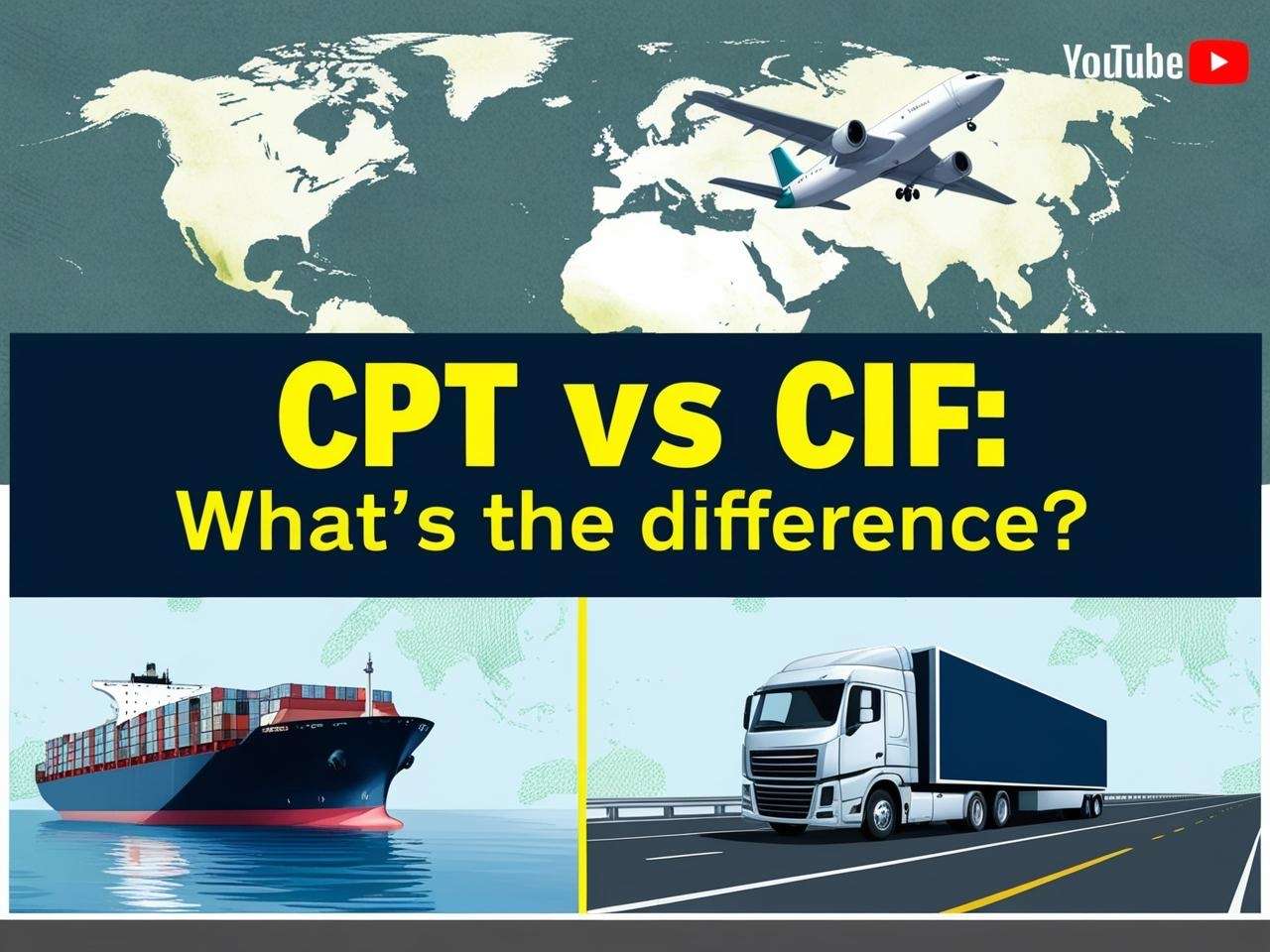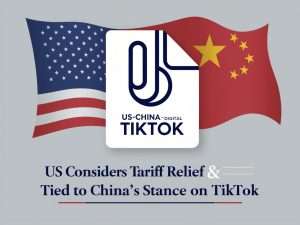When it comes to importing goods, every decision impacts your costs, risks, and overall supply chain efficiency. One crucial choice that often gets overlooked is selecting the right Incoterm—the international trade rule that defines who is responsible for shipping costs, risks, and logistics.
Among the many Incoterms, CPT (Carriage Paid To) and CIF (Cost, Insurance, and Freight) are two commonly used terms, but they are often misunderstood. While both involve the seller covering transportation costs, they differ significantly in terms of risk transfer and insurance coverage.
Choosing the right Incoterm can save you money, reduce risks, and improve your shipping process. Let’s break down the differences between CPT and CIF so you can make the best decision for your business.
CPT vs CIF: The Key Differences
Understanding the differences between CPT (Carriage Paid To) and CIF (Cost, Insurance, and Freight) is essential to making an informed shipping decision. While both Incoterms involve the seller covering transportation costs, they vary in terms of risk transfer and insurance coverage.
-
CPT (Carriage Paid To): The seller pays for the transport to the agreed destination, but responsibility for the goods shifts to the buyer as soon as they are handed over to the carrier. This means that if something happens to the shipment during transit, the buyer bears the risk. CPT applies to all modes of transport, including air, sea, road, and rail.
-
CIF (Cost, Insurance, and Freight): This Incoterm is exclusively used for maritime transport and includes insurance coverage arranged by the seller. The seller is responsible for transport costs and must provide minimum insurance that covers the goods until they reach the destination port. However, like CPT, the risk transfers to the buyer once the goods are handed over to the carrier at the port of departure.
The main takeaway: If you’re shipping by sea and want insurance included, CIF may be the better option. If you prefer more flexibility and want to arrange your own insurance, CPT is often a smarter choice.
Pros and Cons of Each
When deciding between CPT and CIF, it’s important to weigh the advantages and disadvantages of each. Your choice will impact costs, risk management, and shipping flexibility.
✅ CPT (Carriage Paid To)
✔ More flexible – Can be used for all transport modes (air, road, rail, sea).
✔ Faster and simpler for multimodal transport, as it doesn’t require maritime insurance.
✔ The buyer can choose their own insurance provider, potentially getting better coverage.
❌ Risk transfers early – The buyer is responsible for any damage or loss once the goods are handed over to the first carrier.
❌ No insurance included, meaning the buyer must arrange coverage separately.
✅ CIF (Cost, Insurance, and Freight)
✔ More security for the buyer, since insurance is included in the seller’s responsibility.
✔ Easier for buyers who prefer an all-in-one shipping solution.
✔ Common in maritime trade, making it a standard choice for ocean freight shipments.
❌ Limited to sea freight – Not applicable for air, rail, or road transport.
❌ Potentially more expensive, as the seller arranges the insurance, which may not always be the most cost-effective option for the buyer.
❌ Risk still transfers at the port of departure, meaning any issues after that fall on the buyer despite the included insurance.
Bottom Line:
- Choose CPT if you need flexibility, multimodal transport, and control over insurance.
- Choose CIF if you’re shipping by sea and prefer the convenience of an insurance-inclusive option.
CPT or CIF: Which One is Best for You?
Choosing between CPT and CIF depends on your shipping needs, risk tolerance, and mode of transport. Here’s how to decide:
Choose CPT if:
✅ You want full control over insurance and prefer to arrange your own coverage.
✅ You are shipping via air, rail, or road, where CIF is not applicable.
✅ You prefer more flexibility in your logistics and supplier agreements.
Go with CIF if:
✅ You are shipping by sea and want an insurance-included option.
✅ You prefer a hassle-free process, where the seller handles freight and insurance.
✅ You don’t mind paying a slightly higher cost for added security.
If you already have a trusted insurance provider, CPT might save you money. But if you want a simpler, worry-free maritime shipment, CIF could be the way to go.
Make the Right Decision
There’s no universal best choice between CPT and CIF—it all depends on your shipping strategy, mode of transport, and risk management preferences.
If you prioritize flexibility and want control over your insurance, CPT is the better option. If you prefer a simpler, all-in-one maritime solution with insurance included, CIF might be the right fit.
Regardless of your choice, working with a reliable freight forwarder can help you navigate the complexities of international shipping, avoid costly mistakes, and optimize your supply chain. A good partner will ensure your goods arrive safely, on time, and at the best possible cost.
CPT vs CIF – Your Questions Answered
What is the main difference between CPT and CIF?
CPT (Carriage Paid To) applies to all transport modes and requires the buyer to arrange insurance. CIF (Cost, Insurance, and Freight) is used exclusively for maritime shipments and includes insurance provided by the seller up to the destination port.
Who is responsible for insurance in CPT and CIF?
Under CPT, the buyer is responsible for arranging insurance since the seller only covers transportation costs. In contrast, CIF includes insurance arranged by the seller, but this coverage is often minimal, meaning the buyer may need additional protection.
When does the risk transfer from seller to buyer?
For CPT, the risk transfers to the buyer as soon as the goods are handed over to the first carrier, even if the seller is still paying for transport. With CIF, the risk transfers when the goods are loaded onto the vessel at the port of departure, meaning the buyer is responsible for any damage or loss that occurs after that point.
Which is better: CPT or CIF?
The best choice depends on the buyer’s needs. CPT is ideal for those who want more flexibility and prefer to arrange their own insurance, especially when using transport methods other than sea freight. CIF is better suited for buyers who prefer a simple, all-in-one maritime solution with insurance already included, though they should be aware that the coverage provided may be limited.
Can CIF be used for air or road shipments?
No, CIF is specifically designed for sea freight. If goods are transported by air, road, or rail, other Incoterms like CPT or CIP (Carriage and Insurance Paid To) should be used instead.
Is CIF always the safer option because it includes insurance?
Not necessarily. CIF includes insurance, but the coverage is usually minimal, only protecting against basic risks. Many buyers choose CPT so they can negotiate their own insurance with better terms and higher coverage limits.
Why do sellers sometimes push for CIF?
Sellers often prefer CIF because it allows them to control the shipping and insurance process, sometimes at a higher cost to the buyer. They may bundle transportation and insurance in a way that benefits them financially while limiting the buyer’s options for negotiating better terms.
Can I negotiate the insurance terms under CIF?
It is possible to negotiate better insurance coverage under CIF, but this depends on the agreement with the seller. If the standard CIF insurance is insufficient, many buyers opt for CPT instead, allowing them to purchase insurance separately with better protection.












